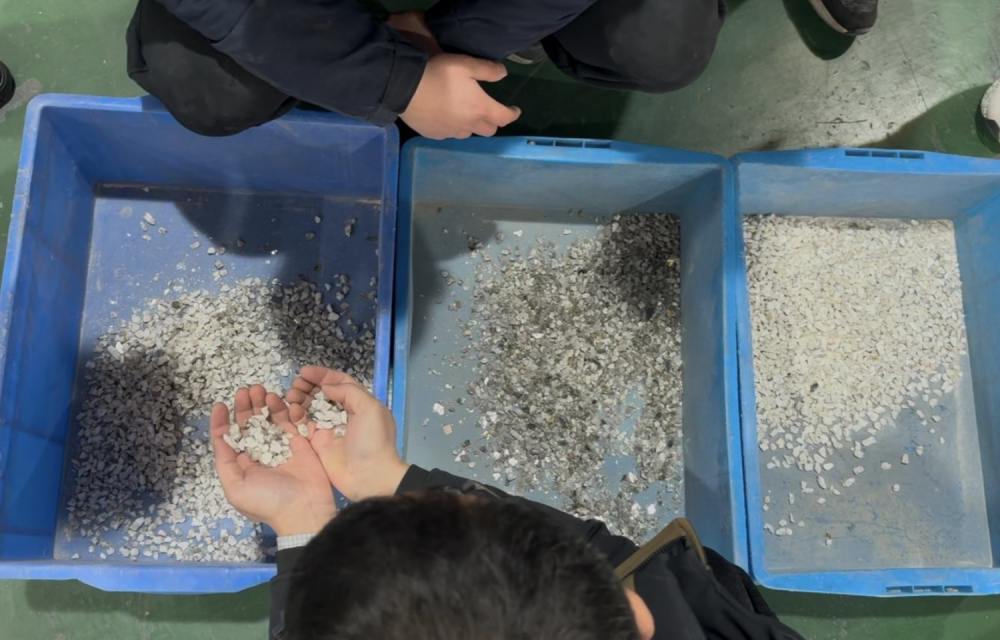WA’s quartz underdog aims for tech stardom with ultra-pure play and a two-mine comeback backed by China ties and savvy ore sorting science


, , , , , , , , , , , , ,
, , ,
, , ,
A new player in Western Australia’s industrial minerals space is making a serious tilt at Asia’s booming demand for high-purity quartz (HPQ), with a dual-mine revival strategy backed by testwork breakthroughs, smart ore sorting, and a boots-on-ground presence in China’s quartz processing heartland.
Industrial Minerals Ltd (ASX: IND) used its slot at the 2025 RIU Sydney Resources Round-up to showcase its plan to reboot two former feldspar and quartz operations — Pippingarra, near Port Hedland, and Mukinbudin, in the Wheatbelt — into fully-fledged suppliers of high-purity product for use in semiconductors, solar panels, engineered stone, and electronics manufacturing.
Speaking at the event, managing director Jeff Sweet didn’t sugarcoat the industrial minerals pitch: “They’re not sexy by any means… but they are essential to everyday products.” He pointed to growing demand from China, which is actively seeking alternative HPQ sources to reduce reliance on US imports from the Spruce Pine mine — currently the global gold standard for quartz purity.

Two Mines, One Mission: Meet the Spec, Hit the Market
IND’s core technical focus is on delivering >99.99% SiO₂ product — a purity threshold required for photovoltaic (PV) and electronic-grade quartz applications. Results from initial beneficiation work at North Carolina State University’s Mineral Research Lab confirmed that benchmark was not only achievable but repeatable. Follow-up trials in China’s Lianyungang quartz hub are ongoing, with an 80-tonne sample already dispatched for both ore sorting and customer evaluation.
At the Pippingarra Quarry, IND holds rights to 80 percent of the mineral content across a granted and operational mining lease. A resource estimate is imminent following recent RC drilling and deep ground-penetrating radar surveys that underpin an exploration target of 1.5 to 3 million tonnes of quartz-bearing pegmatite grading 97–99% SiO₂.
Ore sorting is key to unlocking economic scale. “The limited trials we’ve done have been very promising in terms of separating out the quartz, the feldspar and the pegmatic-hosted quartz as well,” said Sweet. The sorting also enables recovery of co-products like mica and garnet, with potential applications across ceramics, paints, electronics and construction.
Mukinbudin Adds Purity Firepower
The company’s second project — the Mukinbudin Quartz-Feldspar Project — is another historical mine with a quartz legacy, including exports to Japan dating back to the 1970s. Surface rock chips grading up to 99.97% SiO₂ have been confirmed, and testwork on alumina and potash content has also shown promise.
Further RC drilling and DPGR mapping are planned in 2025 to better define the pegmatite zones and expand the footprint of the resource.


Commercial Push: Lianyungang and Beyond
The IND team hasn’t just been testing rocks — they’ve been walking the factory floors. Sweet recently travelled to China to meet potential offtake partners and quartz processors in Lianyungang, the country’s industrial quartz nucleus.
“Just having a presence there… that is the key to building confidence with further potential buyers,” Sweet said, highlighting the role of their local agent in brokering buyer relationships.
IND’s near-term production plan is to initiate sales via direct shipping ore (DSO) using on-site sorting and minimal capex. Longer term, third-party beneficiation or integrated downstream processing could support intermediate quartz product lines like powder and sand, depending on customer requirements and pricing.
Why It Matters
For Rock Wrangler readers — miners, METS suppliers, and mineral tech professionals — IND’s model offers an instructive case study in how industrial minerals are being repositioned as critical inputs in next-gen tech supply chains. With low capex, existing site infrastructure, and verified product quality, it’s a leaner, smarter approach to reactivating old mines for new markets.
And as Sweet put it bluntly: “We’ve got the people, the projects, and the insight into the market to bring this into fruition."
